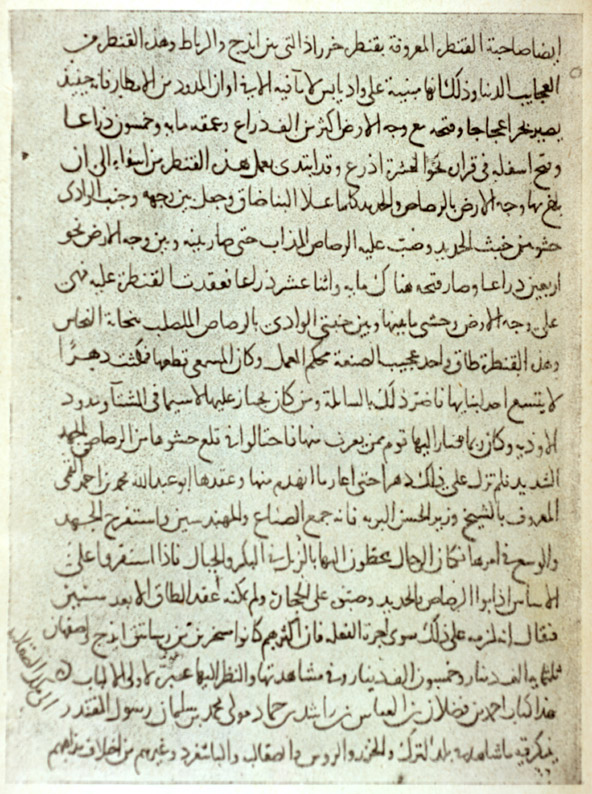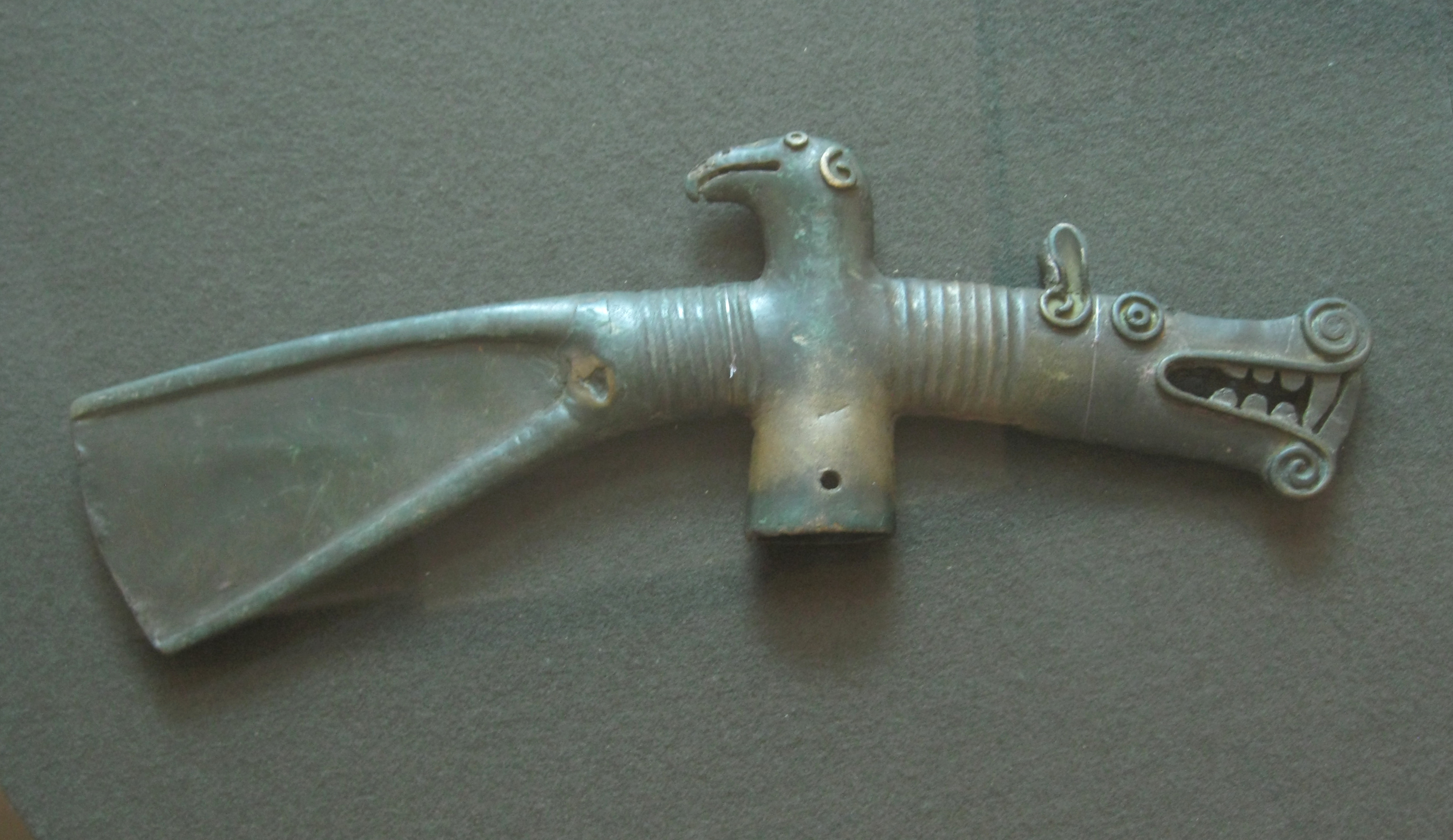|
Balymer
The Balymer complex is an archaeological complex near the village of Balymer (Балымер), Spassky District, Tatarstan, Russian Federation. The former trade emporium on the Volga trade route covers an area of 4 km2. It was first explored in 1870 by A. I. Stoyanov. The settlement, graves and tumuli belonged to the Volga Bulgars or the Volga Vikings ('' Rūsiyyah'') in the 9th-10th centuries, and to the Golden Horde nomads in the 13th-14th centuries. It has been suggested that it was at Balymer that Ibn Fadlan witnessed the funeral of one of the Rus' chieftains (a ship burial involving human sacrifice). There is also ample evidence of the Ananyino and Imenkovo cultures, i.e. Finnic peoples The Finnic or Fennic peoples, sometimes simply called Finns, are the nations who speak languages traditionally classified in the Finnic (now commonly '' Finno-Permic'') language family, and which are thought to have originated in the region of .... References * *Спицын ... [...More Info...] [...Related Items...] OR: [Wikipedia] [Google] [Baidu] |
Ibn Fadlan
Aḥmad ibn Faḍlān ibn al-ʿAbbās ibn Rāšid ibn Ḥammād, ( ar, أحمد بن فضلان بن العباس بن راشد بن حماد; ) commonly known as Ahmad ibn Fadlan, was a 10th-century Muslim traveler, famous for his account of his travels as a member of an embassy of the Abbasid caliph, al-Muqtadir of Baghdad, to the king of the Volga Bulgars, known as his ("account" or "journal"). His account is most notable for providing a detailed description of the Volga Vikings, including eyewitness accounts of life as part of a trade caravan and witnessing a ship burial. He also notably described the lifestyle of the Oghuz turks while the Khazaria, Cumans, and Pechnegs were still around. Ibn Fadlan's detailed writings have been cited by numerous historians. They have also inspired entertainment works, including Michael Crichton's novel ''Eaters of the Dead'' and its film adaptation ''The 13th Warrior''. Biography Background Ahmad ibn Fadlan was described as an Arab in co ... [...More Info...] [...Related Items...] OR: [Wikipedia] [Google] [Baidu] |
Volga Bulgars
Volga Bulgaria or Volga–Kama Bulgaria, was a historic Bulgars, Bulgar state that existed between the 7th and 13th centuries around the confluence of the Volga and Kama River, in what is now European Russia. Volga Bulgaria was a multi-ethnic state with large numbers of Turkic peoples, Turkic Bulgars, a variety of Volga Finns, Finnic and Ugric peoples, and many East Slavs. Its strategic position of allowed it to create a monopoly between the trade of Arabs, Norsemen, Norse and Avars (Caucasus), Avars. History Origin and creation of the state The Bulgars were Turkic tribal confederations, Turkic tribes of Oghuric origin, who settled north of the Black Sea. During their westward migration across the Eurasian steppe, they came under the overlordship of the Khazars, leading other ethnic groups, including Finnic and Iranic peoples. In about 630 they founded Old Great Bulgaria, which was destroyed by the Khazars in 668. Kubrat's son and appointed heir, Batbayan, Batbayan Bezmer, m ... [...More Info...] [...Related Items...] OR: [Wikipedia] [Google] [Baidu] |
Ship Burial
A ship burial or boat grave is a burial in which a ship or boat is used either as the tomb for the dead and the grave goods, or as a part of the grave goods itself. If the ship is very small, it is called a boat grave. This style of burial was practiced by various seafaring cultures in Asia and Europe. Notable ship burial practices include those by the Germanic peoples, particularly by Viking Age Norsemen, as well as the pre-colonial ship burials described in the Boxer Codex (c. 15th century) in the Philippines. Asia-Pacific East Asia China The extinct Bo people of China's Sichuan and Yunnan provinces are known for their hanging coffins. The ancestors of the Bo people were instrumental in helping the Western Zhou overthrow the ruling Yin at the end of the Shang dynasty. Apart from this, the Bo people differed from other ethnic minorities in China through their burial traditions. Instead of the more common burial on the ground, the coffins of the Bo people were found hanging ... [...More Info...] [...Related Items...] OR: [Wikipedia] [Google] [Baidu] |
History Of Tatarstan
The region of Tatarstan, now within the Russian Federation, was inhabited by different groups during prehistory. The state of Volga Bulgaria grew up during the Middle Ages and for a time was subject to the Khazars. The Volga Bulgars became Muslim and incorporated various Turkic peoples to form the modern Volga Tatar ethnic group. The region came under the domination of the Khanate of Kazan in the 15th century. The khanate was conquered by Ivan the Terrible in 1552 and abolished in 1708. This period was marked by settlement of the area by Russians and attempts at conversion to Orthodox Christianity, provoking a number of rebellions among the Tatars and neighbouring groups. In the late 18th and 19th centuries industry developed, economic conditions improved and Tatars achieved more equal status with Russians. However, Tatar national consciousness was growing, and upon the October Revolution of 1917, national institutions were established and independence declared as the Idel-Ura ... [...More Info...] [...Related Items...] OR: [Wikipedia] [Google] [Baidu] |
Archaeological Sites In Tatarstan
Archaeology or archeology is the scientific study of human activity through the recovery and analysis of material culture. The archaeological record consists of artifacts, architecture, biofacts or ecofacts, sites, and cultural landscapes. Archaeology can be considered both a social science and a branch of the humanities. It is usually considered an independent academic discipline, but may also be classified as part of anthropology (in North America – the four-field approach), history or geography. Archaeologists study human prehistory and history, from the development of the first stone tools at Lomekwi in East Africa 3.3 million years ago up until recent decades. Archaeology is distinct from palaeontology, which is the study of fossil remains. Archaeology is particularly important for learning about prehistoric societies, for which, by definition, there are no written records. Prehistory includes over 99% of the human past, from the Paleolithic until the advent o ... [...More Info...] [...Related Items...] OR: [Wikipedia] [Google] [Baidu] |
Finnic Peoples
The Finnic or Fennic peoples, sometimes simply called Finns, are the nations who speak languages traditionally classified in the Finnic (now commonly '' Finno-Permic'') language family, and which are thought to have originated in the region of the Volga River. The largest Finnic peoples by population are the Finns (or more precisely the Suomi, 6 million), the Estonians (1 million), the Mordvins (800,000), the Mari (570,000), the Udmurts (550,000), the Komis (330,000) and the Sami (100,000). The scope of the name "Finn" and "Finnic" varies by country. Today, Finnish and Estonian scholars restrict the term "Finnic" to the Baltic Finns, who include the Western Finns of Finland and their closest relatives but not the Sami. In Russia, however, where the Eastern Finns live, the word continues to be used in the broad sense, and sometimes implies the Volga Finns who have their own national republics. Three groups of people are covered by the names "Finn" and "Finnic" in the broad se ... [...More Info...] [...Related Items...] OR: [Wikipedia] [Google] [Baidu] |
Ananyino Culture
The Ananyino culture is an archeological culture of the late 8th to 3rd centuries BCE in present-day Tatarstan, Russian Federation. The name comes from the burials first discovered near the village Ananyino (Ананьино) in the vicinity of Elabuga, excavated by P.V.Alabin and I.V.Shishkin in 1858. It is located in the territory of the Middle Volga (from the Vetluga River to the town of Ulyanovsk) and the Kama River basin. In the southeast the culture stretches along the lower course of the Belaya River, from its mouth up to the town of Birsk (fortresses Novokabanov, Kakrykul, Peter-Tau, Anachev, Tra-Tau, Trikol, Novobiktov, Birsk settlement, Tash-Elga burials). In the Volga-Kama area and more northerly the culture extends to the Pechora River and Subarctic Ural. In the Volga and Lower Kama areas the traces of the Ananyino Culture fade in the 6th century BCE, in other areas in the 3rd to 2nd centuries BCE. Archeological monuments Unfortified settlements, fortresses and ... [...More Info...] [...Related Items...] OR: [Wikipedia] [Google] [Baidu] |
Human Sacrifice
Human sacrifice is the act of killing one or more humans as part of a ritual, which is usually intended to please or appease gods, a human ruler, an authoritative/priestly figure or spirits of dead ancestors or as a retainer sacrifice, wherein a monarch's servants are killed in order for them to continue to serve their master in the next life. Closely related practices found in some tribal societies are cannibalism and headhunting. Human sacrifice was practiced in many human societies beginning in prehistoric times. By the Iron Age with the associated developments in religion (the Axial Age), human sacrifice was becoming less common throughout Africa, Europe, and Asia, and came to be looked down upon as barbaric during classical antiquity. In the Americas, however, human sacrifice continued to be practiced, by some, to varying degrees until the European colonization of the Americas. Today, human sacrifice has become extremely rare. Modern secular laws treat human sacrifices ... [...More Info...] [...Related Items...] OR: [Wikipedia] [Google] [Baidu] |
Spassky District, Republic Of Tatarstan
Spassky District (russian: Спа́сский райо́н; tt-Cyrl, Спас районы) is a territorial administrative unit and municipal district of the Republic of Tatarstan within the Russian Federation. The total area of the district is 2028 km². It is located in the southwestern part of Tatarstan. The administrative center is Bolgar. As of 2020, the population estimated at 18,599 residents. Traditionally the Spassky district specializes in fur farming and grain farming. Agricultural land occupies up to 117.8 thousand hectares, while pa around 16.3 thousand hectares is pastureland. The largest agricultural investors are the Avangard forage company, the Bulgar plant growing farm and the Khuzangaevskoe agricultural enterprise. The remains of previous Bulgarian settlements form a historical site Bolghar which starting from 2014 has been a part of the UNESCO Heritage Site List. Location In the east, the Spassky District borders the Alkeevsky and Alekseevs ... [...More Info...] [...Related Items...] OR: [Wikipedia] [Google] [Baidu] |
Viking Funeral
Norse funerals, or the burial customs of Viking Age North Germanic Norsemen (early medieval Scandinavians), are known both from archaeology and from historical accounts such as the Icelandic sagas and Old Norse poetry. Throughout Scandinavia, there are many remaining tumuli in honour of Viking kings and chieftains, in addition to runestones and other memorials. Some of the most notable of them are at the Borre mound cemetery, in Norway, at Birka in Sweden and Lindholm Høje, and Jelling in Denmark. A prominent tradition is that of the ship burial, where the deceased was laid in a boat, or a stone ship, and given grave offerings in accordance with his earthly status and profession, sometimes including sacrificed slaves. Afterwards, piles of stone and soil were usually laid on top of the remains in order to create a tumulus. Additional practices included sacrifice or cremation, but the most common was to bury the departed with goods that denoted their social status. Grave goods ... [...More Info...] [...Related Items...] OR: [Wikipedia] [Google] [Baidu] |
Tatarstan
The Republic of Tatarstan (russian: Республика Татарстан, Respublika Tatarstan, p=rʲɪsˈpublʲɪkə tətɐrˈstan; tt-Cyrl, Татарстан Республикасы), or simply Tatarstan (russian: Татарстан, tt-Cyrl, Татарстан), sometimes also called Tataria (russian: Татария, tt-Cyrl, Татария), is a Republics of Russia, republic of Russia located in Eastern Europe. It is a part of the Volga Federal District; and its capital city, capital and largest city is Kazan, an important cultural centre in Russia. The republic borders Kirov Oblast, Kirov, Ulyanovsk Oblast, Ulyanovsk, Samara Oblast, Samara, and Orenburg Oblasts, the Mari El Republic, Mari El, Udmurt Republic, Udmurt, and Chuvash Republics, and the Bashkortostan, Republic of Bashkortostan. The area of the republic is . The unofficial Tatarstan motto is ''Bez Buildırabız!'' (''We can!''). As of the Russian Census (2021), 2021 Census, the population of Tatarstan was& ... [...More Info...] [...Related Items...] OR: [Wikipedia] [Google] [Baidu] |



.jpg)


_-_Ciudad_de_México.jpg)

